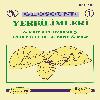Computing excavated volume in a road project using GIS programs: a case study from Şırnak, Turkey
Yol projelerinde CBS programları kullanarak kazı- dolgu hacimlerinin hesaplanması: Şırnak- Türkiye'de bir çalışma
___
- Anderson, J.M. and Mikhail, E. M., 1998, "Surveying: Theory and Practice", McGraw-Hill Book Co., Inc., 7th Edition, New York, N.Y.'
- Yanalak, M. and Bay kal, O., 2003, "Digital Elevation Model Based Volume calculation Using Topographical Data", ASCE, Journal of Surveying Engineering, 129(2): 58-64
- Yanalak, M., 2005, "Computing Pit Excavation Volume", ASCE, Journal of Surveying Engineering, 131(1):15-19
- Easa, S.M., 1998, "Smooth surface approximation for computing pit excavation volume". ASCE, J. Surveying Engineering, 124(3), 125-133.
- Chambers, D.W, 1989, "Estimating pit excavation volume using unequal intervals". ASCE, J. Surv. Engng., , 115(4), 390-401.
- Chen, C.S. and Lin, H.C., 1991, "Estimating pit excavation volume using cubic spline volume formula". ASCE, J. Surv. Engng., ASCE, 117(2), 51-66.
- Stark, R. and Mayer, R., 1981, "Eartmoving logistics". ASCE, Journal of the Construction division.107(CO2):297-312.
- Nandgaonkar, S., 1981, "Earthwork transportation allocation: operation research". ASCE, Journal of the Construction division, 107(CO2)-373-392.
- Easa, S.M., 1988, "Estimating pit excavation volume using nonlinear ground profile". ASCE; J. Surveying Engineering, 114(2), 71-83.
- Siyam, Y., 1987, "Precision in cross-sectional area calculation on eartwork determination". ASCE Journal of Surveying Engineering, 113(2):139-151.
- Christian, J. and Caldera, H., 1988,"Earthmoving cost optimization by operational research". Canadian Journal of Civil Engineering, 15:679-684.
- Alkass,S. and Harris, F., 1988, "Expert system for earthmoving equipment selection in road construction". ASCE, Journal of Construction Engineering and Management,114(3)-.426-440.
- Epps, J. and Corey, M., 1990, "Cut and Fill calculation by modified average-end-area method". ASCE, Journal of Transportation Engineering, 116( 5):683-
- Jayawardane,A., and Harris,F., 1990, "Further development of integer programing in eartwork optimization". ASCE, Journal of Construction Engineering and Management. 116(1 ):18-34.
- Easa, S., 1991, "Pyramid frustum formula for computing volumes at roadway transition areas". ASCE, Journal of Surveying Engineering, 117(2):98-101.
- Shi.J. and Abourizk, S., 1997, "Resource-based modelling for construction simulation". ASCE, Journal of Construction Engineering and Management, 123(1 ):26-33.
- Miles, S. and Ho, C, 1999, "Application and issues of GIS as tool for civil engineering modelling". ASCE, Journal of Computing modelling in Civil Engineering. 13(3): 144-152.
- Shi, J., 1999, "A neutral network based system for predicting earthmoving production. Construction Management and Economics, 17: 463-471.
- Oloufa,A.A., 1991, "Triangulatio.n application". ASCE, Journal of Computing in Civil Engineering.5(l): 103-121. ''
- Petrie, G. and Kennie, T.J., 1987, "Terrain modelling in surveying and civil engineering". Computer-Aided Design. 19(4): 171-187.
- Chen, C.S.and Lin, H.C., 1992, "Estimating excavation volume using new formulas". Survey Land Information System.104-111.
- Easa, S., 1992, "Estimating earthwork volumes of curved roadways: mathematical model". ASCE , Journal of Transportation Engineering, 118(6): 834-
- Kalmar, J., Papp, G. and Szabo, T., 1995, "DTM based surface and volume approximation, geopysical application". Computer Geoscience, 21(2),245-257.
- Fiedler, J., 1992, "Orthometric heights from global poisioning system". ASCE, Journal of Surveying Engineering, 118(3),70-79.
- Fan,H., 1988, "On the Earth elipsoid best fitted to the surface". Journal of Geodesy,72(9), 511-515.
- Smith,D.A. and Small, H.J., 1999, "The Carip97 high-resolution geoid hight model for the Caribbean Sea". Journal of Geodesy, 73(1),1-9.
- Watson, D., 1992, "Contouring guide to the analysis and display of spatial data". Pergamon press, Oxford, England, 321.
- Li, Z., 1991, "Effects of check points on the reliability of DTM accuracy estimates obtained from experimental tests", Photogrammetric Engineering & Remote Sensing, 57(10), 1333-1340.
- Li, Z., 1992, "Variation of the Accuracy of Digital Terrain Models With Sampling Interval", Photogrammetric Record, 14(79), 113-128.
- Li, Z., 1993, "Mathematical Models of The Accuracy of Digital Terrain Model Surfaces Linearly Constructed From, Square Gridded Data", Photogrammetric Record, 14(82), 661-674.
- Li, Z., 1994, "A comparative study of the accuracy of digital terrain models(DTM)based on varios data models".ISPRS,Journal of Photogrammetry and Remote Sensing,49(1), 2-11.
- ISSN: 1019-1003
- Yayın Aralığı: 1
- Başlangıç: 1986
- Yayıncı: Çukurova Üniversitesi Jeoloji Mühendisliği Bölümü
Kemerhisar (Niğde) yöresi doğal karbondiyoksit CO2 gazının özellikleri ve üretim tekniği
Suni mermer plakların donma-çözülme sonrası dayanım ve aşınma özelliklerinin araştırılması
M.Özgür KESKİN, Ahmet M. KILIÇ
Niğde Sineksizyayla Metagabrosunun beton agregası olarak değerlendirilmesi
Ali GÖKOĞLU, Mustafa FENER, Mehmet SÖYLEMEZ
Arzu ERASLAN, Niyazi AVŞAR, Feyza DİNÇER, Zümra İÇ
Demirhisar (Mersin KD' su) civarı tersiyer birimlerinin sedimantolojik ve ortamsal özellikleri
Ulvi Can ÜNLÜGENÇ, Ulaş İnan SEVİMLİ, Güldemin ÖRGÜNÇ, Kemal GÜRBÜZ
Tanelerin bilim ve teknolojideki önemi
Genetik algoritma ile sınır tenörü optimizasyonu
Hakan ERSOY, Fatma GÜLTEKİN, Fırat Arzu ERSOY
Uludağ (Bursa) güneyindeki maden sularının oluşumuna ilişkin bir yaklaşım
M. Yılmaz SAVAŞÇIN, Tut Servin Füsun HAKLIDIR
Demirtaş-Sarımazı-Yumurtalık (Adana) arasının tektono-stratigrafisi
